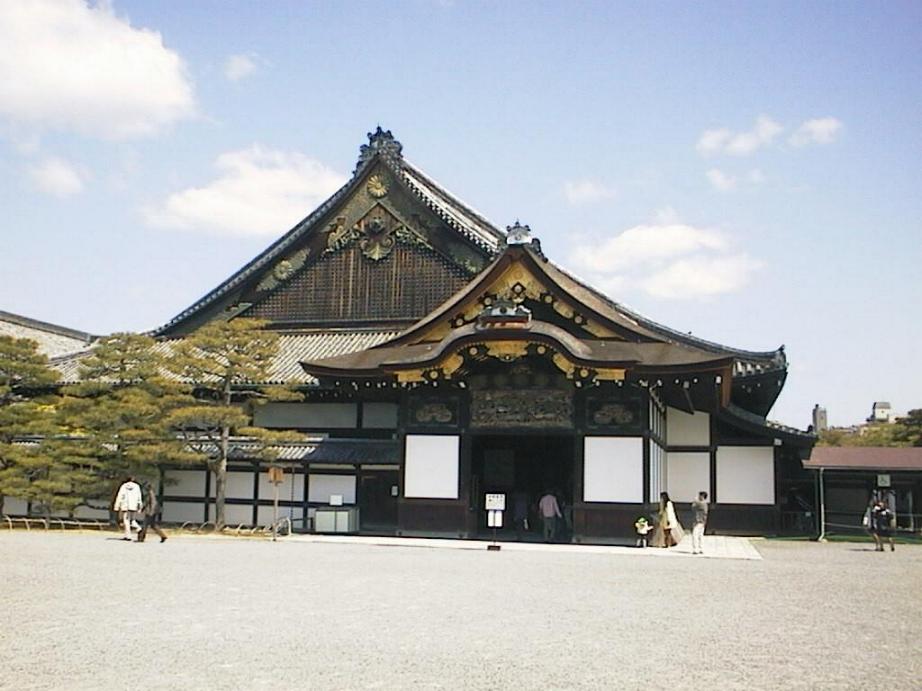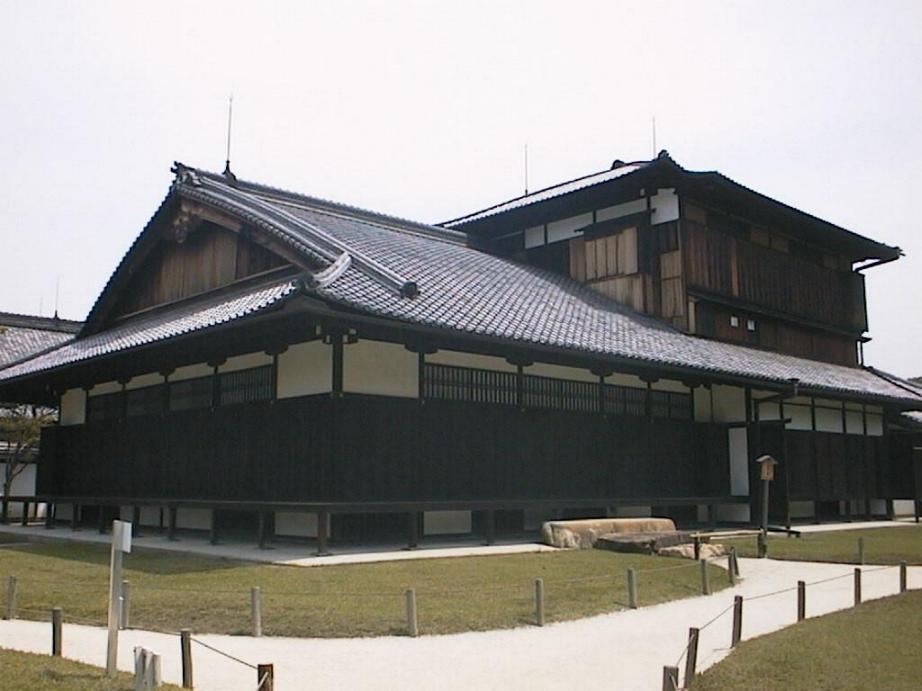![]() 二 条 城 (世界遺産)
二 条 城 (世界遺産)
| 1 | 二の丸御殿 国宝 NIJOJO CASTLE 桃山時代武家風書院造りの代表的なもので、建物面積3,300平方メートル、部屋数33、畳は800畳余り敷かれている。各部屋の襖絵は狩野派の手によるもので、部屋の目的に応じて描かれています。廊下はご存知の通り「うぐいす張り」。 徳川幕府における京都の拠点となった二条城 1867年、15代将軍慶喜がここで大政奉還を行った。 Construction of this remarkable edifice was started in 1603 by leyyasu Tokugawa, the first shogun of the Edo period and completed in 1626 by Iemitsu, the third shogun. It was used as a residence by the Edo shoguns when they visited Kyoto. A notabe feature of Nijo is the squeaking "nightingale"floor, which was designed to alert the inmates of the house to the presence of intruders. The castle is quite palatial; works of famous artists of the Kano school decorate the sliding doors, walls, and ceiling. The Ninomaru garden was created by Enshu Kobori, and has been designated a Site of Scenic Beauty. TEL (075) 841-0096 |
 |
| 2 | 本丸 HONMARU 本丸は、1626年3代将軍家光により増築したもの。もとは、城内に高くそびえ壮麗を誇っていた5層の天守閣がありましたが、1750年雷火により焼失しました。 現在の建物は、もと京都御所にあった旧桂宮御殿をここに移し建てられたものです。この建物は、宮御殿の遺講としては完全な形で残っている唯一のもので、重要文化財に指定されています。 The name Honmaru designates the area surrounded by the inner moat of the Castle. The original palace in it was constructed in 1626 to hous the Shogun and his retainers, and incorporated strctures of Momoyama Period date (1573-1614) transferrd from Fushimi Castle. Its five storied central tower, one located in the southwest corner of the complex, was struck by lightning and burned down in 1750. In 1893, the present structure was transferrd to Nijo Castle from the Kyoto Imperial Palace, Originally built 1847 as the residence of Prince Katsura, it remains an elegant example of courtly architecture. Consequently, it has been desigated an Important Cultural Property. The palace is opened to the public for special viewing in the fall. |
 |
| 3 | 天井 大広間の天井は、四方が丸く折上った「折上げ格天井」で、一の間は、中がもう一段折上った「二重折上げ格天井」になっています。 |
 |